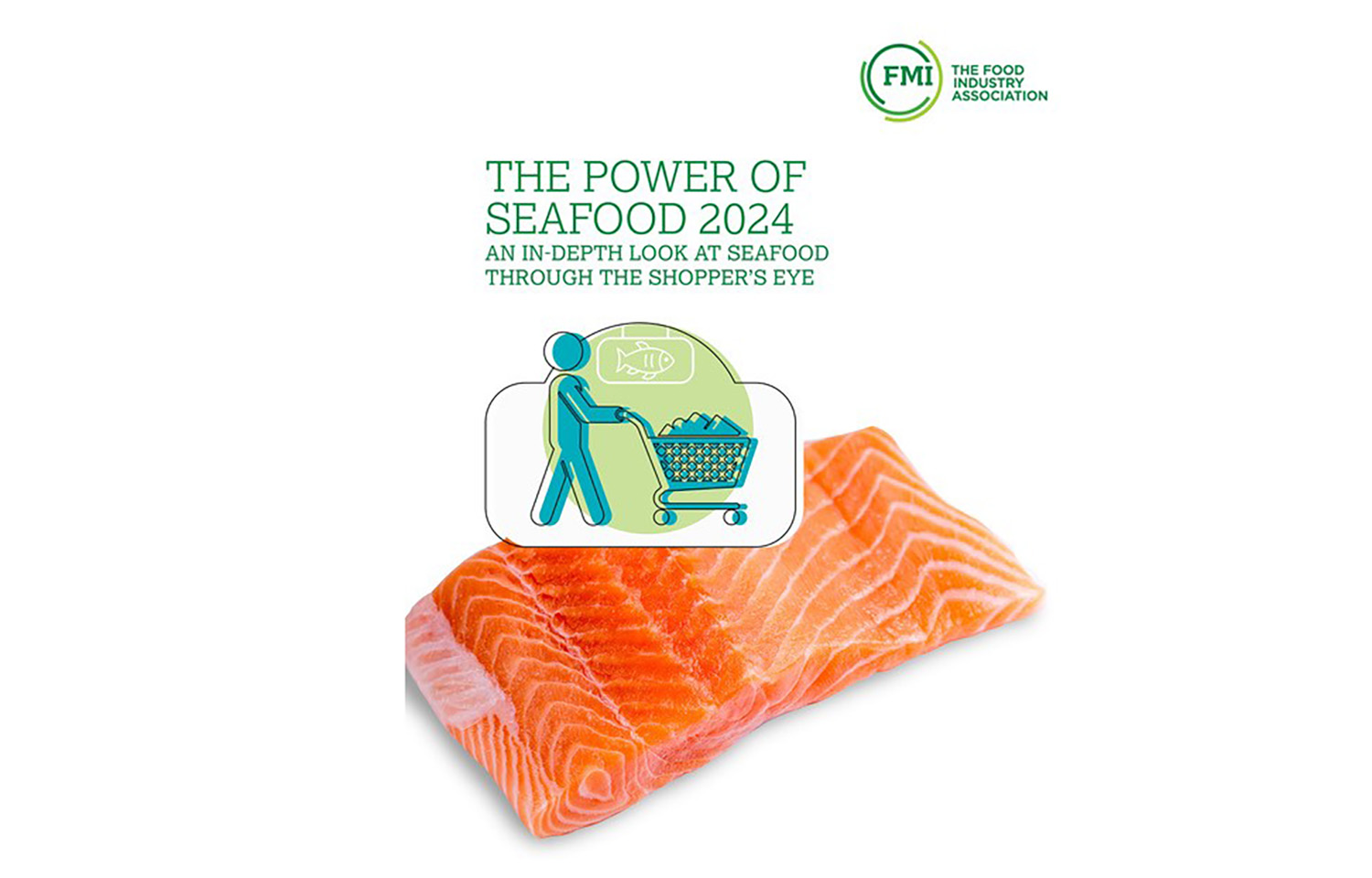FMI – The Food Industry Association's Power of Seafood 2024 report highlighted declining U.S. retail seafood sales in 2023, but also revealed preparing seafood at home has grown incresaingly popular since the Covid-19 pandemic.
The report, released during a conference session at Seafood Expo North America in Boston, Massachusetts, U.S.A., on 10 March, found U.S. seafood sales revenue declined 3.1 percent to USD 18.9 billion (EUR 17.3 billion) in 2023. By category, frozen seafood realized the largest drop in revenue, decreasing 5.8 percent to USD 6.8 billion (EUR 6.2 billion). Fresh seafood sales dropped 3.5 percent, dipping to USD 6.2 billion (EUR 5.7 billion).
Shrimp, salmon, tuna, and crab comprised more than 70 percent of U.S. seafood sales last year, according to FMI, with shrimp being the biggest seller despite a supply glut resulting in low prices that resulted in sales dropping 8.7 percent by value.
Though many categories suffered sales dips during the challenging year, crab performed well throughout 2023, with sales by value rising 3.8 percent and unit sales increasing 14.6 percent.
Sushi sales also continued to grow moderately by value year over year in 2023 – increasing only 1 percent to USD 3.1 billion (EUR 2.8 billion). But compared to four years ago, sales were up 63 percent.
“After the strong growth seen in the two years of the Covid-19 pandemic, seafood has given back those unit gains and, if not for deli seafood – including sushi – remains below 2019 unit sales,” FMI said in the report.
Higher prices drove consumers away from seafood last year, with 37 percent of those surveyed by FMI saying inflation and seafood’s cost relative to other proteins, led them to cut back on seafood purchases, according to the report.
FMI’s report also found that 40 percent of frequent seafood purchasers believe seafood is expensive, while 52 percent of non-seafood purchases believe it is expensive.
Fifty-four percent of Americans say price influences their seafood-purchasing decisions, beating out other criteria such as quality and freshness, store location, high-quality service, variety, seafood origin, and sustainability certifications.
FMI reported one positive note for the seafood industry: Americans are cooking seafood at home more often, according to FMI.
“While overall consumption levels have dropped, more consumers are enjoying seafood at home,” FMI Vice President of Fresh Foods Rick Stein said. “As inflationary pressures decline, we’ll expect to see more consumers return to seafood, especially if retailers offer easy ways to enjoy seafood sustainably, easily, and healthfully.”
Home-cooked seafood now makes up ...








